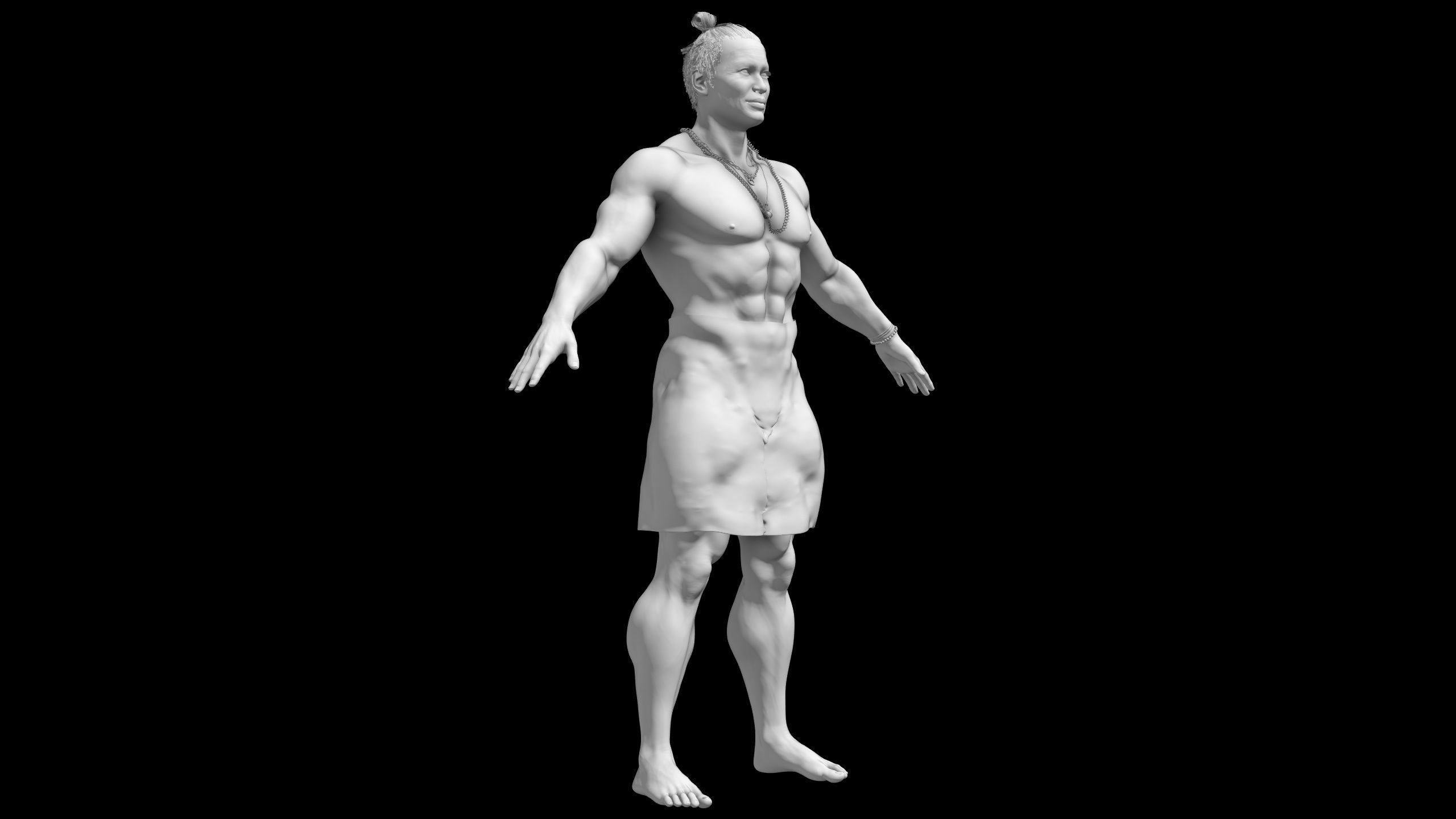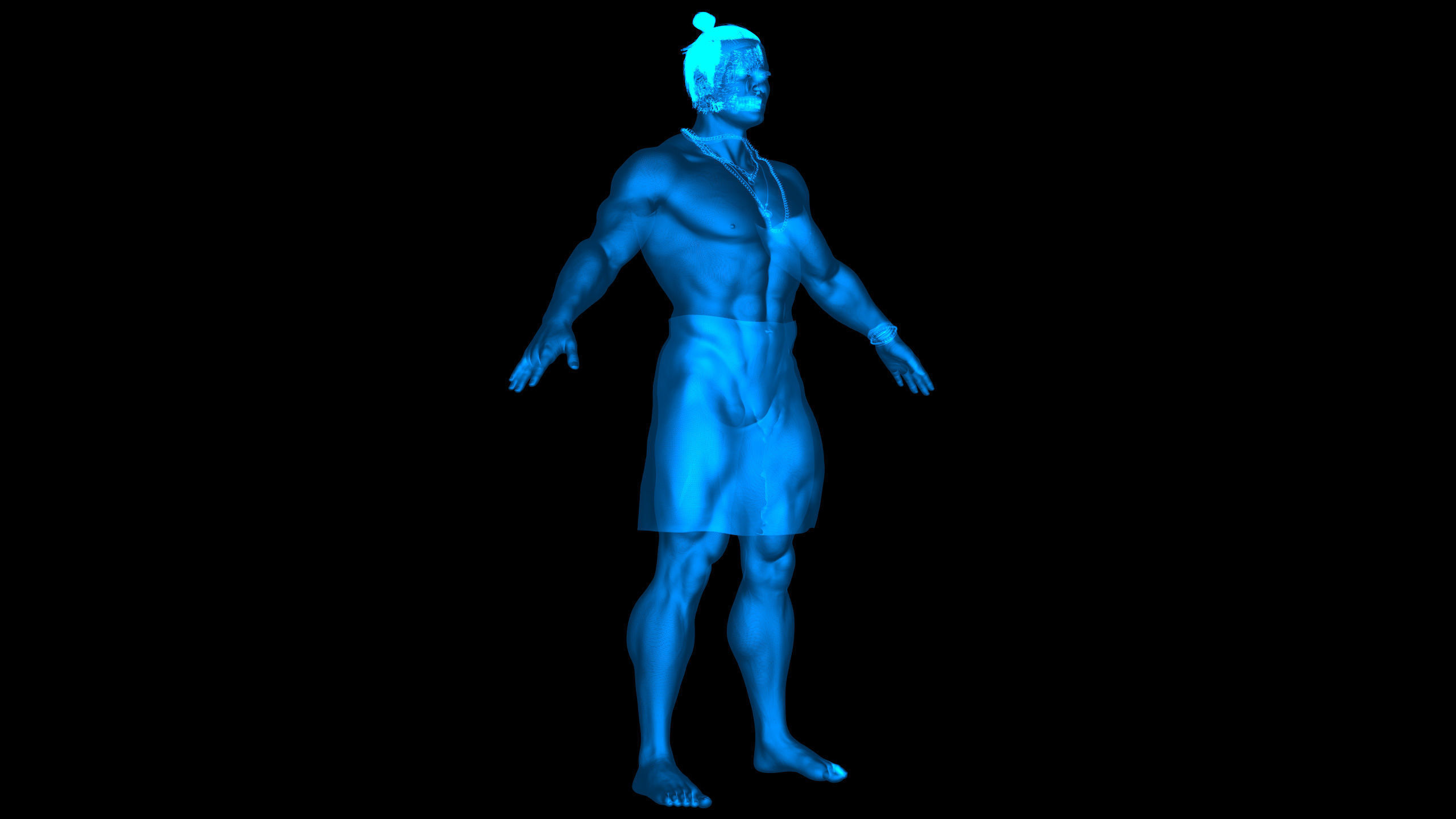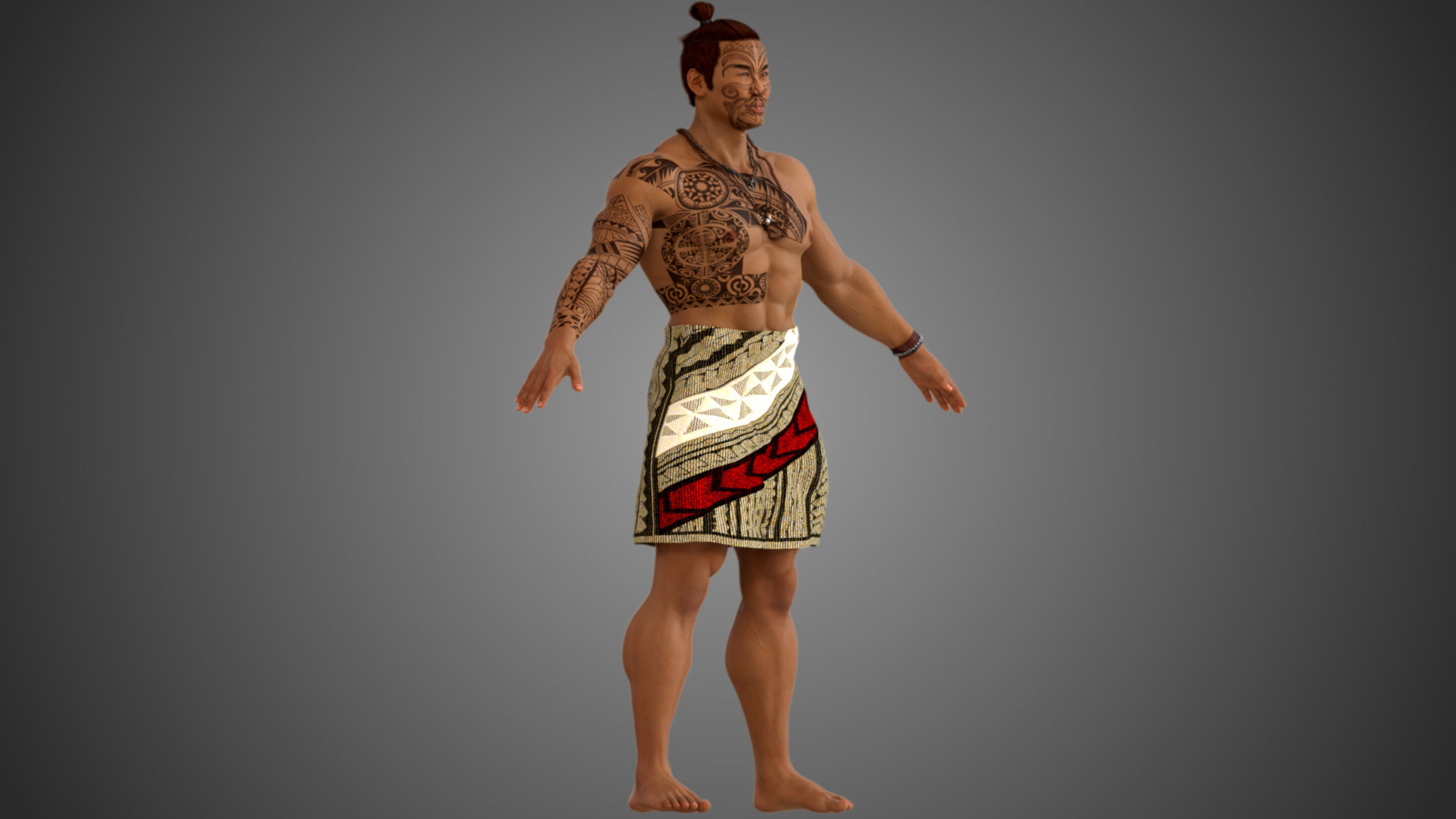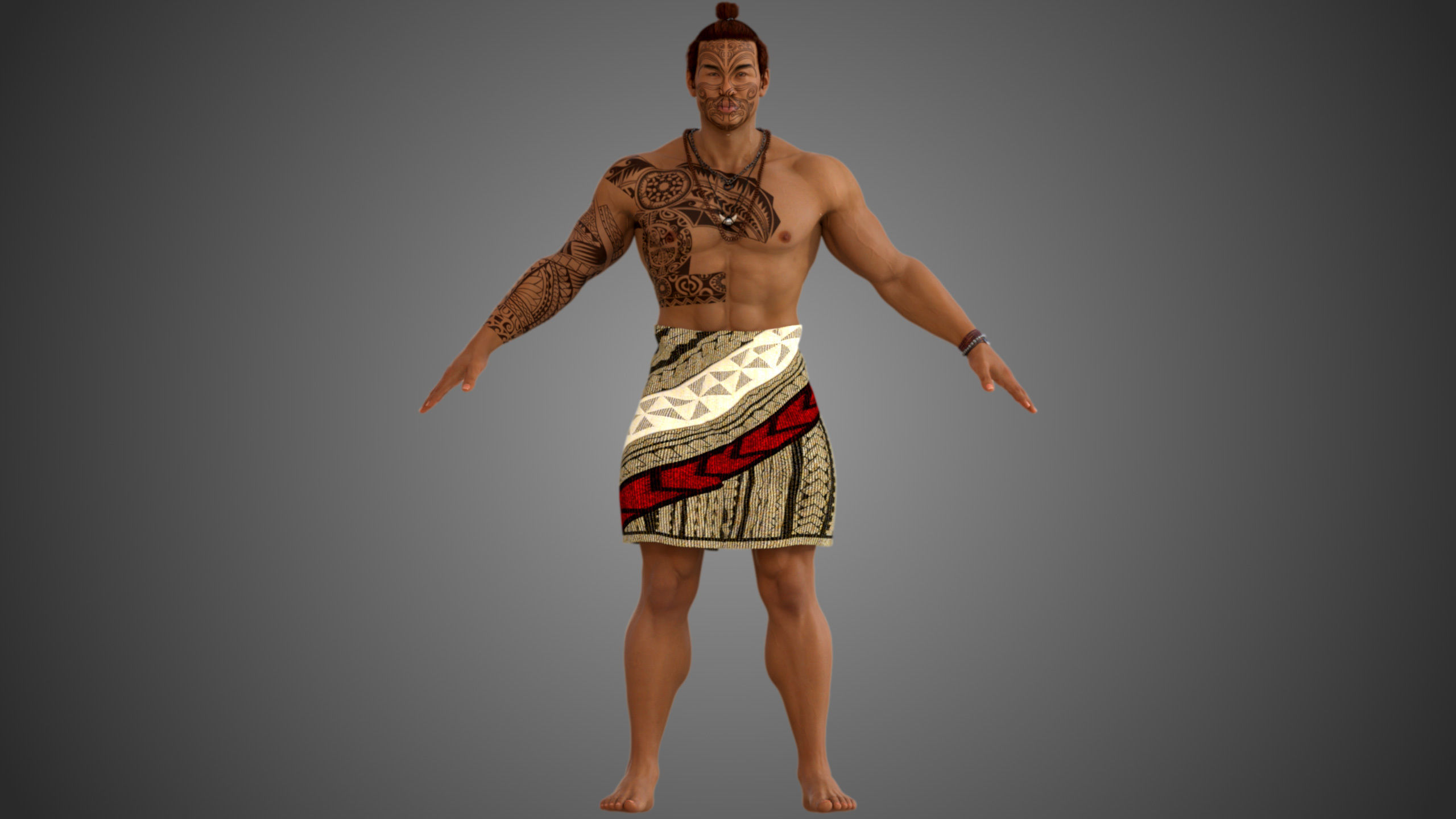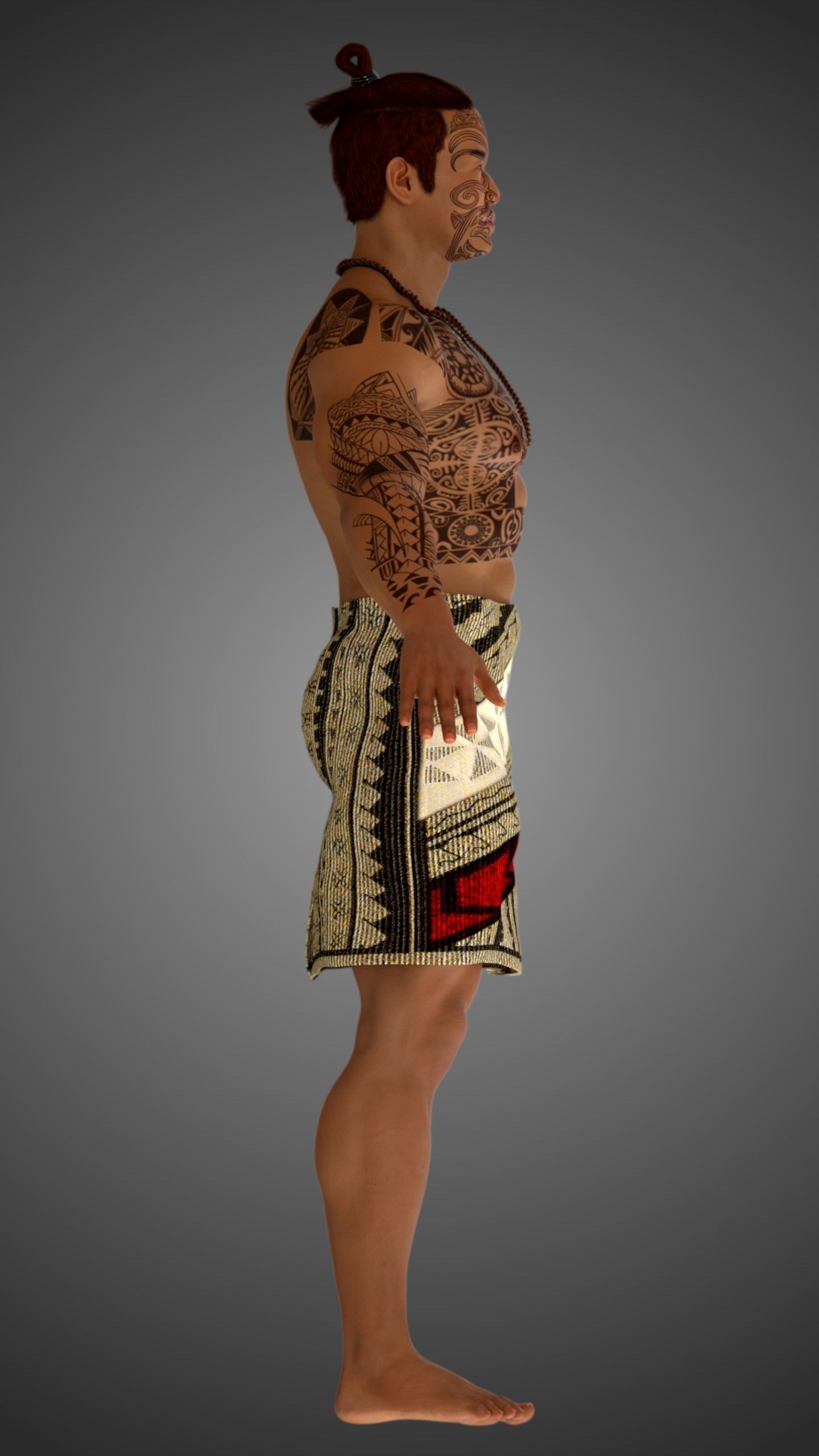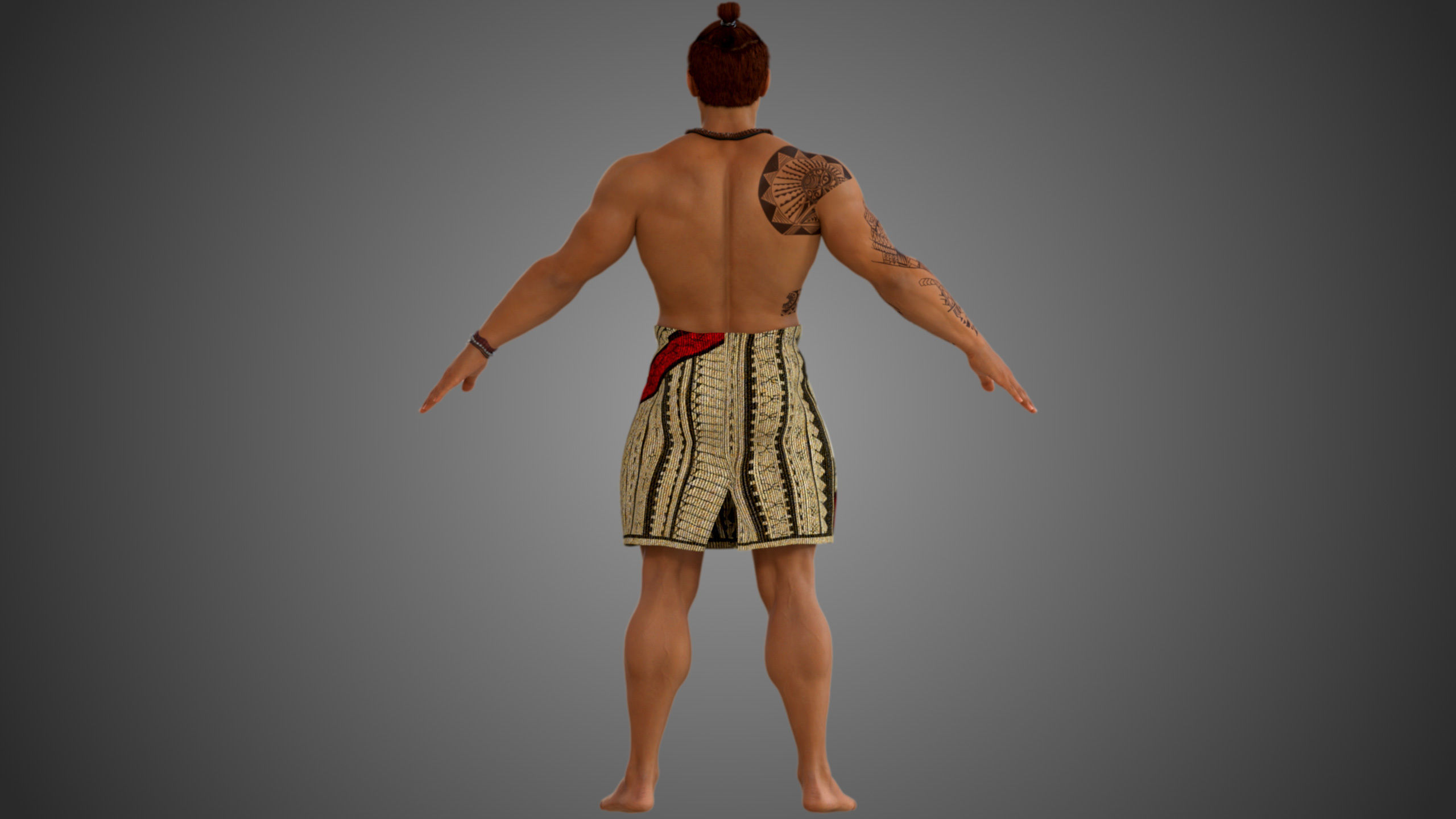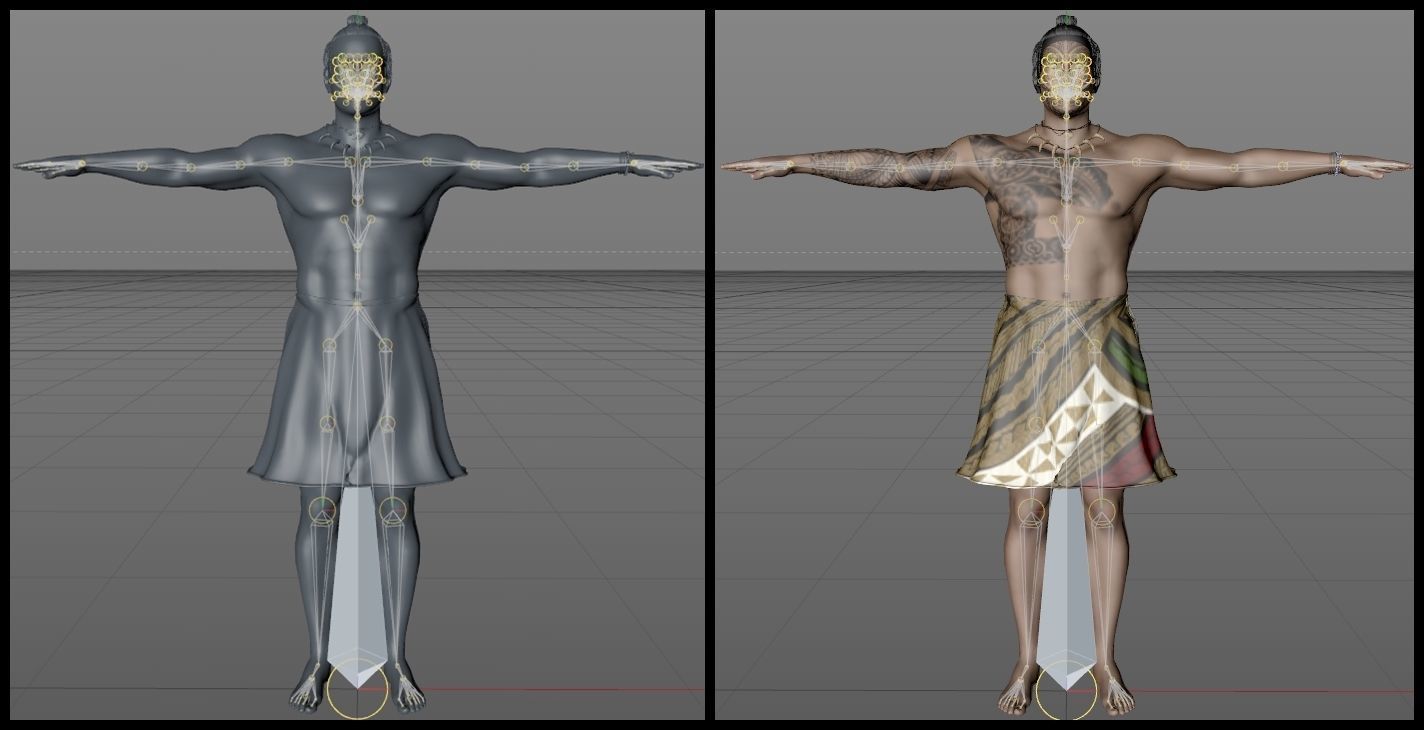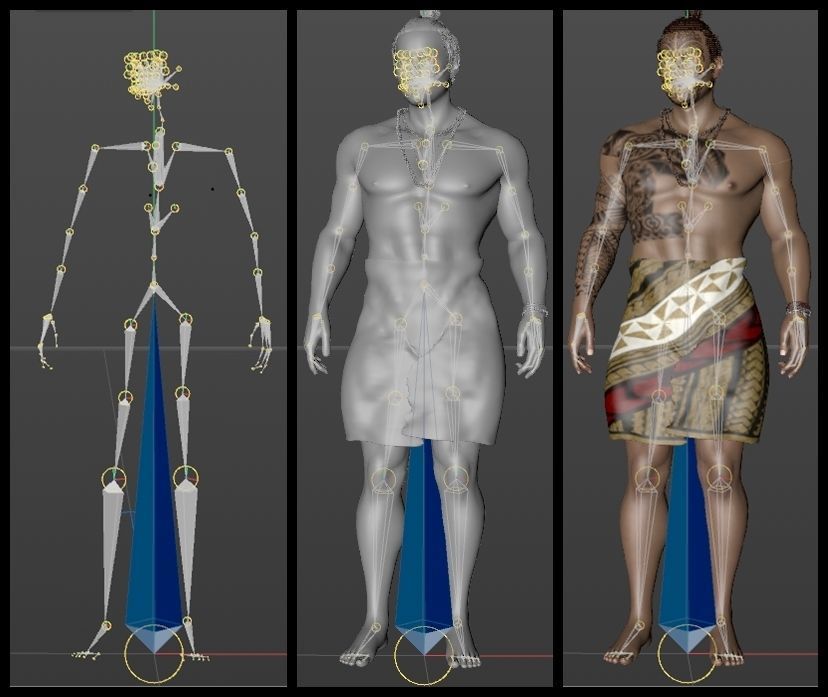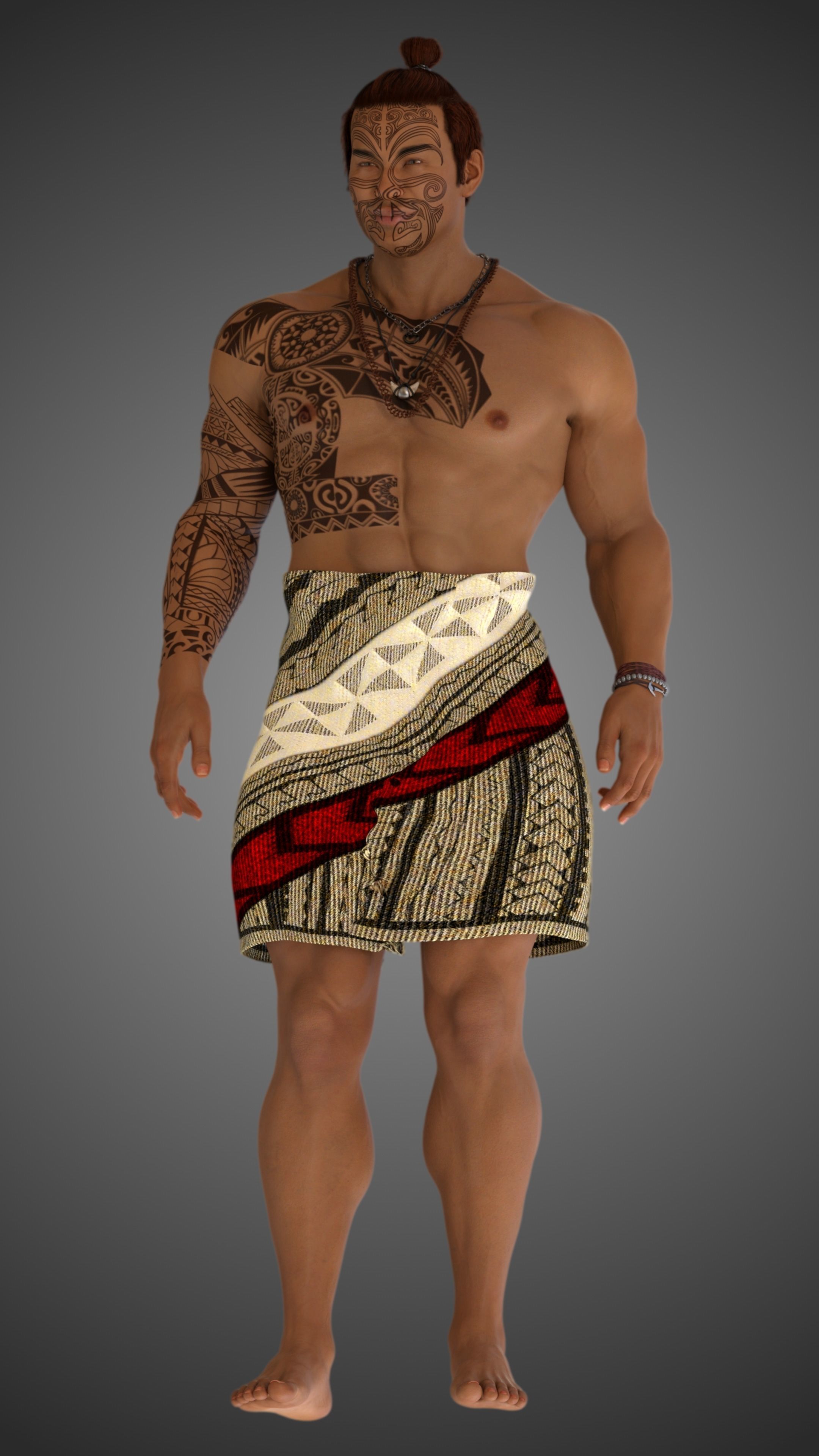
Native Polynesian Male 3D model
Native Polynesian Male
Polynesians form an ethnolinguistic group of closely related people who are native to Polynesia (islands in the Polynesian Triangle), an expansive region of Oceania in the Pacific Ocean. They trace their early prehistoric origins to Island Southeast Asia and form part of the larger Austronesian ethnolinguistic group with an Urheimat in Taiwan. They speak the Polynesian languages, a branch of the Oceanic subfamily of the Austronesian language family.Polynesians, including Samoans, Tongans, Niueans, Cook Islands Māori, Tahitian Mā'ohi, Hawaiian Māoli, Marquesans and New Zealand Māori, are a subset of the Austronesian peoples. They share the same origins as the indigenous peoples of Taiwan, Southeast Asia (especially the Philippines, Malaysia and Indonesia), Micronesia, and Madagascar.The Māori are the indigenous Polynesian people of mainland New Zealand (Aotearoa). Māori originated with settlers from East Polynesia, who arrived in New Zealand in several waves of canoe voyages between roughly 1320 and 1350. Over several centuries in isolation, these settlers developed their own distinctive culture, whose language, mythology, crafts, and performing arts evolved independently from those of other eastern Polynesian cultures. Some early Māori moved to the Chatham Islands, where their descendants became New Zealand's other indigenous Polynesian ethnic group, the Moriori.Samoans or Samoan people (Samoan: tagata Sāmoa) are the indigenous Polynesian people of the Samoan Islands, an archipelago in Polynesia, who speak the Samoan language. The group's home islands are politically and geographically divided between the Independent State of Samoa and American Samoa, an unincorporated territory of the United States of America. Though divided by national border, the culture and language are the same.The Samoan people and culture form a vital link and stepping stone in the formation and spread of Polynesian culture, language and religion throughout Eastern Polynesia.Polynesian trade, religion, war, and colonialism are important markers within Polynesian culture that are almost certainly rooted in the Samoan culture. Samoa's colonial history with the kingdom of Tonga, Fiji and French Polynesia form the basis of modern Polynesian culture.Traditional Samoan tattoo (tatau), pe'a (male tatau), malu (female tatau), demonstrate the strong ties many Samoans feel for their culture. Samoans have practiced the art of tattooing men and women for over 2,000 years. To this day, a man's tattoo extensively covers from mid-back, down the sides and flanks, to the knees. A woman's tattoo is not as extensive or heavy. The geometric patterns are based on ancient designs that often denote rank and status. The va'a (canoe), for example, stretches across a man's mid-back.In Samoa's cultural past most males were tattooed between the ages of 14–18, when it was determined they had stopped growing, so the designs would not stretch and suffer in beauty. Today, there has been a strong revival of traditional tattooing in the past generation, not only in Samoa but throughout Polynesia, often as a symbol of cultural identity.Tatau, the Samoan word for tattoo has a number of meanings including correct or rightness. It also signifies the correct quadrangular figures in reference to the fact that Samoan tattoo designs do not include circular lines, although other Polynesian tattoo motifs do. Early Englishmen mispronounced the word tatau and borrowed it into popular usage as tattoo.Traditional tattooing is a painful process. The Samoan tattoo master dips his cutting tools into black ink made from the soot of burnt candlenut shells and then punctures designs into the skin. The cutting tool consists of a short piece of bamboo or light wood with a piece of tortoiseshell bound at right angles at one end. A little bone comb is bound to the lower broad end of the tortoiseshell. The larger the comb, the greater the area on the skin is covered with fewer strokes. The master uses a small mallet to repeatedly tap a short-handled instrument. The process takes days and is sometimes partially accomplished over longer periods, with recuperation in between.Tattoo designs have changed to include freehand symbols such as the kava bowl representing hospitality; the characterization of the Samoan house or fale signifying kinship; emblems of nature — shells, fish, birds, waves, centipedes; and the traditional geometric lines and angles of different lengths and sizes.The Peʻa is the popular name of the traditional male tatau (tattoo) of Samoa, also known as the malofie. It covers the body from the middle of the back to the knees, and consists of heavy black lines, arrows, and dots.Better known by its Hawaiʻian name, kukui, the oily kernel of the husked candlenut, known in Samoan as tuitui or lama, is burned and the black soot collected is used as the color base for the traditional ink used in Samoan tattooing. The modern tufuga artists utilize commercially produced inks that comply with international tattoo regulations and local health safety codes.
All Diffuse, Normal Bump, Ambient Oclussion, Roughness & Height Maps Included
Includes 3 Animations In FBX Format:Walk In Place, Walk Forward & Idle


